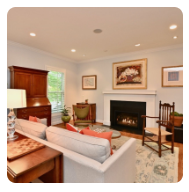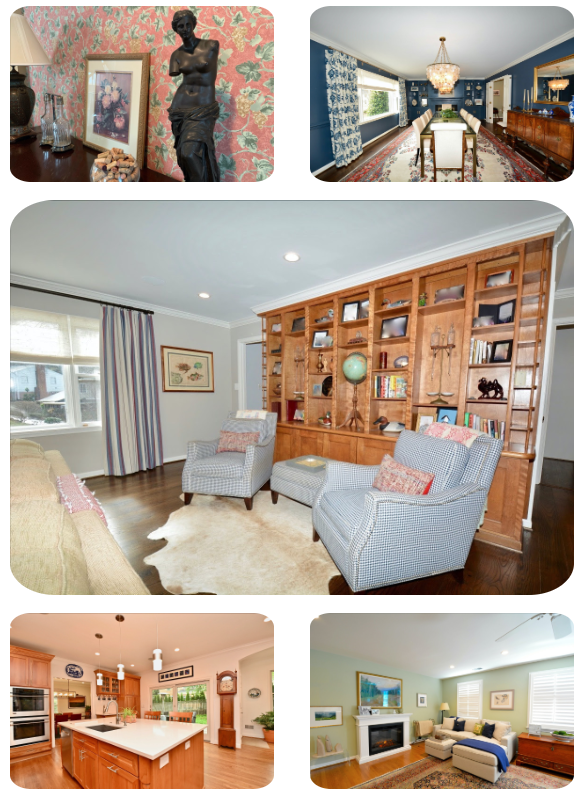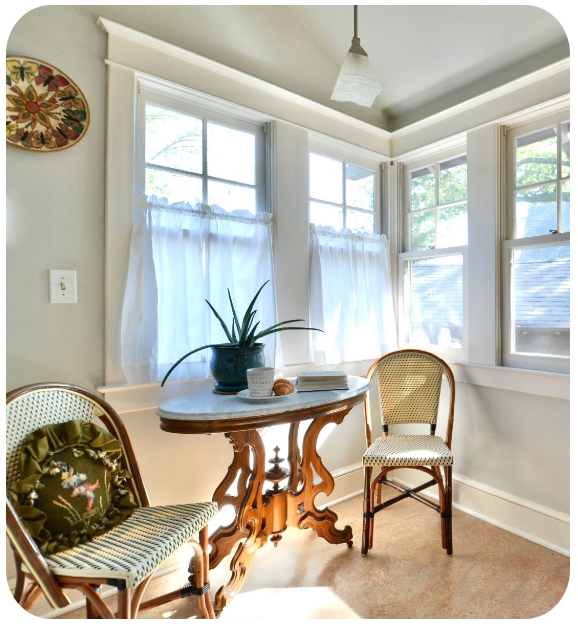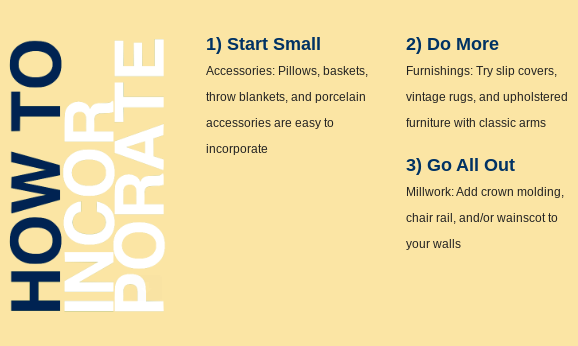Samara Goodman
Samara Interiors
 Does it seem like there are new interior design terms popping up weekly? Cottagecore, grandmillennial, grandmacore, hygge, and so on. This Samara Interiors Newsletter will explain what some of them mean and put them into the context of other, more familiar design terms. The most important takeaway for us is that classic design and tried-and-true aesthetics are always in style.
Does it seem like there are new interior design terms popping up weekly? Cottagecore, grandmillennial, grandmacore, hygge, and so on. This Samara Interiors Newsletter will explain what some of them mean and put them into the context of other, more familiar design terms. The most important takeaway for us is that classic design and tried-and-true aesthetics are always in style.
GRANDMILLENIAL
What's old is new again! The relatively new grandmillennial design aesthetic is consistent with what Samara Interiors refers to as transitional design. To us, transitional design is a classic decorating style that is exemplified by a well-curated and elevated blend of the old and new. Samara Interiors specializes in transitional design. The photos below show examples of how we implement transitional decor into various rooms of clients' homes. We have also heard the grandmillennial aesthetic described as "posh" cottage core!

To address the historical context of this term, I have asked a favorite grandmillennial and brilliant historian, Sarah Reeder of Artifactual History Appraisal, to give us her take on this style. Sarah says, “When Samara first asked me to write about grandmillennial design as she thought my taste was representative of it, my first thought was, 'Who, me?' Granted, my own grandmother had superb style, but when I think "grandmillennial," what immediately comes to mind is crochet, doilies, and potpourri. But when I researched what grandmillennial style actually is, it turns out Samara was right! The name was first coined by Emma Bazilian for an article in House Beautiful in 2019 and has become a design sensation in the subsequent years, particularly embraced by millennials like me.
- Combining items from multiple design eras? Check.
- Bright colors and bold prints? Check.
- A love of unique pieces that are assembled over time? Check.
… a wonderful way to mix inherited items with new acquisitions you love. Not being constrained to a single style or design era creates a unique home that truly reflects the person living there, rather than a mass-produced suite that looks like an entire page from a furniture catalog just got delivered to your house. On reflection, now I'm proud to be a grandmillennial!”
COTTAGE CORE
This whimsical aesthetic has been embraced since the start of the pandemic and is exemplified by elements such as light, flowing linens and vintage floral patterns on textiles, tea cups, and paintings. There are two classic decor styles that this new term brings to mind: English country and shabby chic. English country design is a style that has been around for some time. In our view, cottage core is a muted version of the English country design style. Designer Rachel Ashwell coined the term "shabby chic" in 1980. This aesthetic was inspired by rustic French country living. The photos below are examples of vignettes that reflect this style.


NYU professor and co-founder of Perfect Old Things, LLC, Max Kaplan, shares his suggestions for how to create this style in your home from his perspective as both a visual culture expert and a fan of this charming style. Max says, "[We] encourage decorators and collectors to incorporate the beauty of the 'country' or 'cottage core' aesthetics into multilayered interiors using folk art objects like quilts, theorems, baskets, and hooked rugs. A seasoned American Folk Art dealer-as-mentor reminds us that folk art has consistently been a constant reference in fashion, textiles, and interior decorating through time as the genre paved the way for modern art in 1930s America."

HYGGE
This is a Danish term that means "quality of coziness." In decor, it refers to bringing a feeling of well-being into your home. This style makes us think of the Scandinavian minimalism design aesthetic. The homes pictured below created warm, inviting, and nurturing environments for these client and their guests.

For more information, contact Samara Goodman.